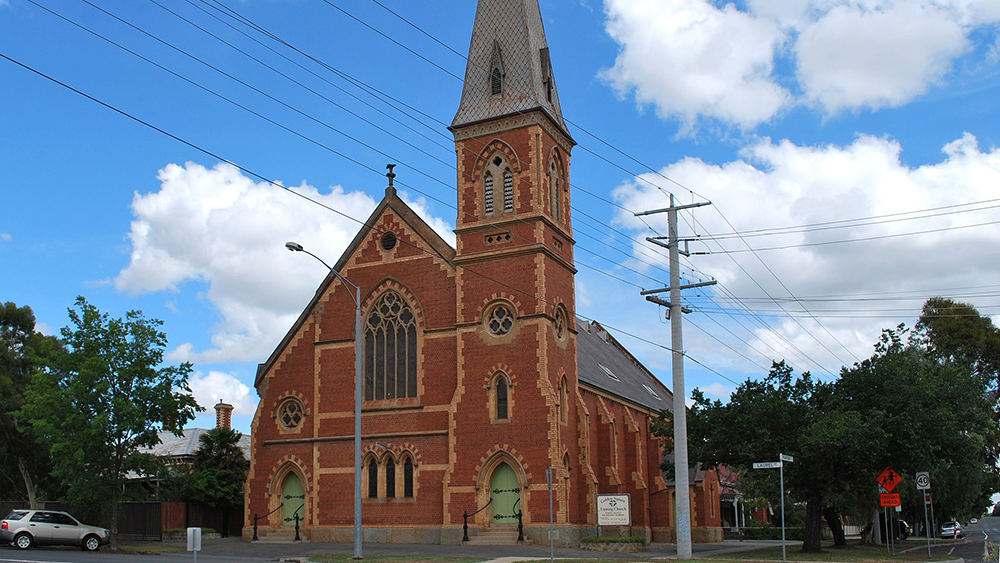Redress for survivors of sexual abuse by church leaders, not the sale of nearly half their church property is the story Tasmanian Anglican leaders want Australians to hear.
“An estimated liability of around $8 million in new and additional payments to survivors, it will require decisive action and significant sacrifice for everyone across our Diocese (region),” Richard Condie, the Bishop of Tasmania announced on the weekend.
“I understand that the sale of churches causes pain and sadness for church members as well as the wider local community.” — Richard Condie, Bishop of Tasmania
The Tasmanian statement was headlined “Anglican Church in Tasmania sacrifices to fund redress.” The ABC report was headed “Tasmanian Anglican churches could be sold to fund abuse survivors redress”, a subtle shift of emphasis.
Eternity understands that some 55 Tasmanian survivors have already received payments from an existing local redress fund and these may need to be increased. In addition the Royal Commission into Institutional Responses to Child Sexual Abuse has identified more claimants. A national average payment of $78,000 with a cap of $150,000 is expected.
Condie’s announcement has come in advance of the Tasmanian government signing on to a national redress scheme. It puts the Tasmanian Anglican Diocese (region) at the forefront of public response to the Redress issue.
Apart from the Catholic Church no other denomination has fully committed itself to the redress scheme. While most have agreed in principle, several churches, for example the Uniting Church, say they are waiting on the final negotiations with the states. At this stage NSW and Victoria have signed up.
The Tasmania Diocese will propose to its Synod (annual meeting of all local church representatives) in June that they sell over 120 church properties, which is just under half of all its properties.
Bishop Condie said, “I understand that the sale of churches causes pain and sadness for church members as well as the wider local community. They have been an important part of our Tasmanian heritage. However, our commitment to justice, recognition and support of survivors through providing redress underlies the need for this sacrifice”.
A spokesperson for Sydney Diocese – the largest Anglican region in Australia – told Eternity that it was unlikely they will need to sell property to make their redress payments as provision has already been made.
A recent Fairfax survey of Catholic Church property holdings estimated Australia’s largest church owns more than $30 billion in real estate. But like the Anglicans, exactly which parts of the church owns property will determine the impact of redress.
A spokesperson for the Truth Justice Healing Council (TJHC) of the Catholic Church told Eternity that there was an “absolute commitment that redress needs to be fully funded”. The TJHC is co-ordinating the Catholic response to the royal commission. A mix of sales of assets and insurance claims by congregations and dioceses are expected to be the sources of funds, “just like the Anglicans.”
The Tasmanian Anglicans’ response is likely to be followed by other vulnerable parts of the Christian Church. Two other massive property sales by church regions have occurred recently, both involving debt caused by start up schools that expanded too quickly. The Anglicans in Bathurst have sold three schools and other property to repay a $25m debt to the Commonwealth Bank, and is reported to be bracing for more sales to fund redress. The Uniting Church in Victoria/Tasmania sold $78m of property to pay off debts mostly incurred by new schools. In both cases church leaders dealt with a significant level of grief and upset experienced by locals.
An alternative response to payments to survivors occurred in Adelaide where the Anglican Church took out a loan – coincidently of $8m – to fund an earlier round of redress. The loan enabled that diocese to draw down funds to pay survivors without holding a fire sale of property – and enabled the focus to be kept on the church’s repentance. That loan has now been repaid in full, through donations and cutting back spending.
Email This Story
Why not send this to a friend?


